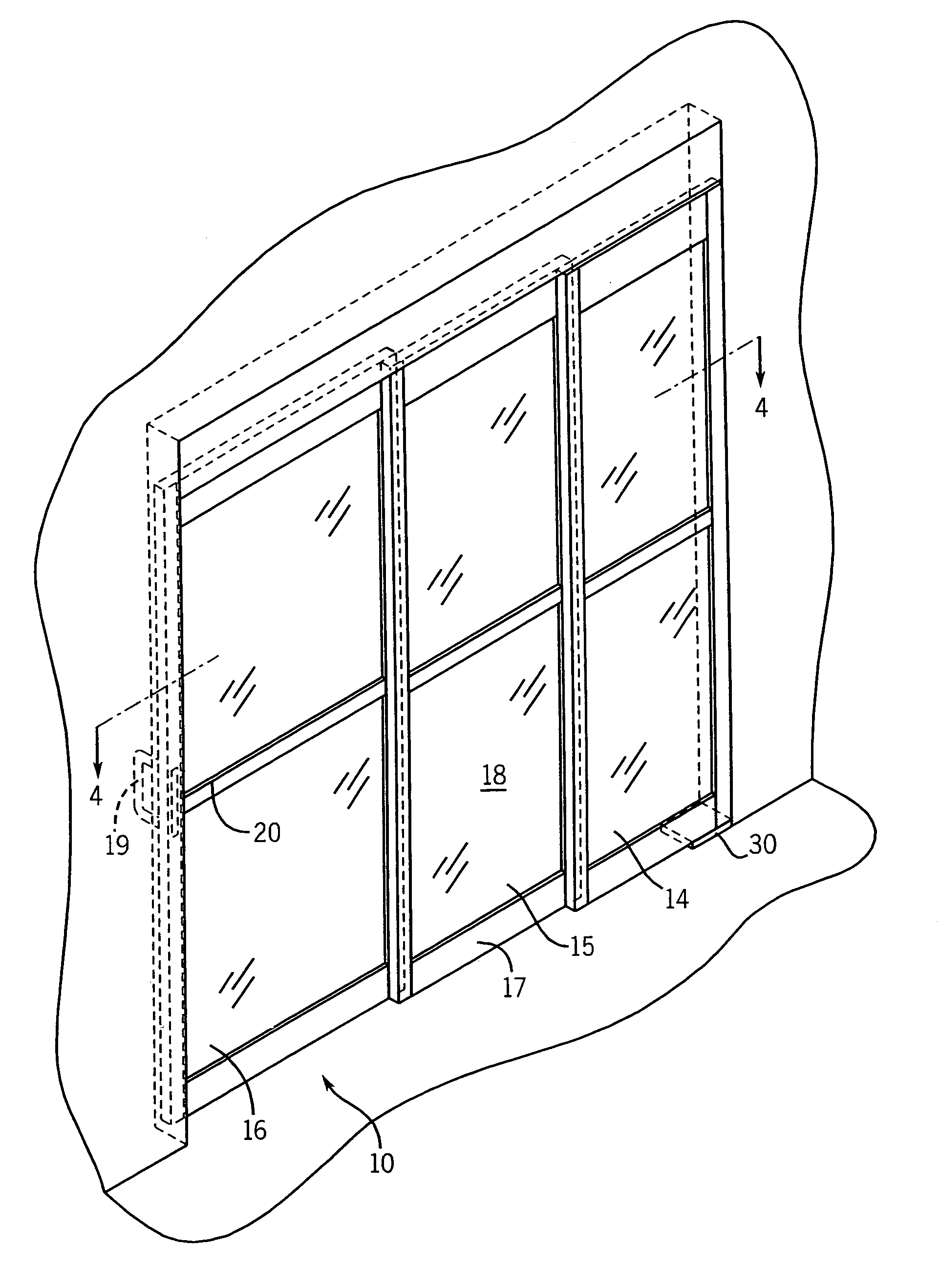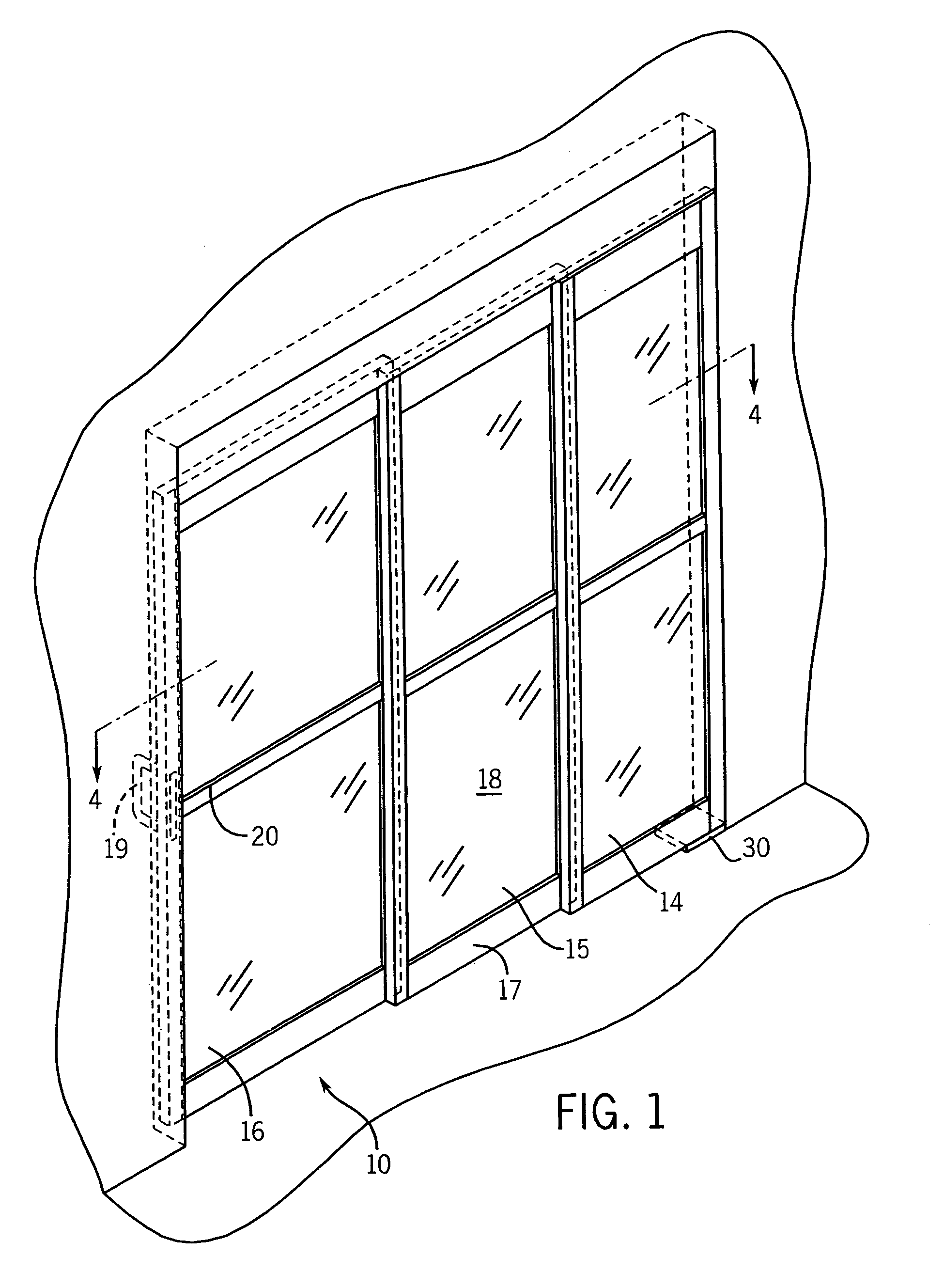Slidable door assemblies with automatic pivot latching
a sliding door and latching technology, applied in the field of sliding door assemblies, can solve the problems of insufficient adjacent wall space, required extra steps, and required separate non-automatic converting adjustments, and achieve the effect of reducing time and being inexpensive to produ
- Summary
- Abstract
- Description
- Claims
- Application Information
AI Technical Summary
Benefits of technology
Problems solved by technology
Method used
Image
Examples
Embodiment Construction
[0038]FIGS. 1-3 illustrate a first embodiment of a slidable door assembly 10 of the present invention. The assembly is shown as controlling access through an entry 12, such as one might find in a hospital emergency room area. The slidable door assembly 10 has a swing panel 14 which preferably merely pivots. The assembly also has a lead panel 16 which slides along the entry (and as will be discussed below also pivots). In the FIG. 1 embodiment, there is also a trailing panel 15 intermediate the swing panel 14 and lead panel 16 which slides along the entry (and also pivots).
[0039]These panels are conventional in most respects. For example they can be formed mostly of glass 18 with a surrounding frame 17. Alternatively, the panels may be made of opaque material, particularly where the door serves a privacy or security function. There may also be a conventional handle 19 mounted on the lead door and bracing 20. Alternatively, a powered system can drive movement of the panels.
[0040]In an...
PUM
 Login to View More
Login to View More Abstract
Description
Claims
Application Information
 Login to View More
Login to View More - R&D
- Intellectual Property
- Life Sciences
- Materials
- Tech Scout
- Unparalleled Data Quality
- Higher Quality Content
- 60% Fewer Hallucinations
Browse by: Latest US Patents, China's latest patents, Technical Efficacy Thesaurus, Application Domain, Technology Topic, Popular Technical Reports.
© 2025 PatSnap. All rights reserved.Legal|Privacy policy|Modern Slavery Act Transparency Statement|Sitemap|About US| Contact US: help@patsnap.com



